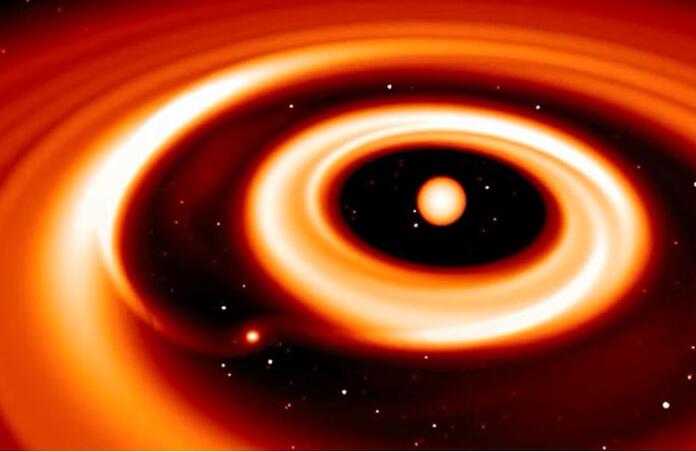ALMA Detects Circumplanetary Disk Allowing for Thorough Analysis of Planetary Systems

The T Tauri Stars are a group of variable stars, the majority of which are pre-main sequence. This cluster is comprised of the some of the youngest stars visible on Earth, making it a crucial observational target when investigating system formation. On August 1st, a group led by Jaehan Bae published their identification of a potential planetary disk around a planet orbiting the star, AS 209, located 395 light years from Earth and with a stellar mass of 1.2 M☉. This could potentially launch studies into the formation processes of these planetary systems and potentially affirm our understandings of the evolution of our solar system.
The identification of circumplanetary disks (CPDs) have been exceedingly rare discoveries due to the minimal radiation emitted by them. These are torus like structures, composed primarily of gas, dust and small asteroids, that accrete around young planets during their formation. As a large planet forms within a star’s so-called protoplanetary disk, it clears its orbital path of debris, which, to conserve the material’s angular momentum, is subsequently caught in orbit around the planet instead. Their importance lies in that this accretion now controls the growth of the planet itself, as well as later developing into a satellite, such as a moon.
The key to this discovery was the recent advancements in radioastronomy, particularly the use of the Atacama Large Millimetre/Sub-millimetre Array (ALMA), the most sensitive terrestrial observatory. This allowed for imaging of the AS 209 protoplanetary disk to be clearer than previously feasible.
By analysing images of AS 209’s protoplanetary disk, we can identify the locations of the gaps that arise because of planetary formation, a common method of locating exoplanets. The study identifies these gaps within the 12CO emission channel, which show a 78 au wide gap in the disk at 200 au from the centre of mass of the system. The location of the planet itself is also found in this channel due to certain ‘velocity kinks’ which arise due of matter accreting around a set point.

Next, analysis continued within the 13CO channel, identifying a very strong point source of radiation, in the same location as the young planet. This led Bae et al to the conclusion that this source must in fact be a protoplanetary disk. This is further supported by certain numerical simulations performed, which presented a striking resemblance in structure to what was observed.

This discovery marks the first use of gaseous emissions to locate a circumplanetary disk allowing for further inferences to be made regarding the properties of this CPD. These signatures led to a mass of <0.027 Earth masses, as well as a dust to gas ratio of <9 x 10-4. This affirms understanding that the dynamics of these systems must largely be dominated by gas, rather than dust.
That said, Bae et al do discuss that their images were limited to a velocity resolution of 200ms-1. This makes is impossible to determine the nature of certain mechanisms within the system, particularly whether the disk rotates or envelopes the planet. Furthermore, their limited filter range opens the opportunity of spectral analysis of the region to determine further information about the planet itself, such as temperature and evolutionary stage. With the potential presented with this discovery, these avenues should undoubtedly be considered in the near future.
--
Cover Image: Artistic rendition of a protoplanetary disk containing a a young planet. By Frederic Masset
Journal Source: J. Bae et al, Molecules with ALMA at Planet-forming Scales (MAPS): A Circumplanetary Disk Candidate in Molecular-line Emission in the AS 209 Disk, The Astrophysical Journal Letters, Volume 934, No 2, 2022
